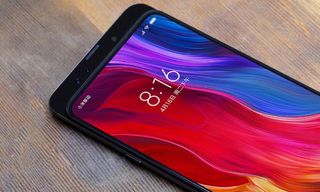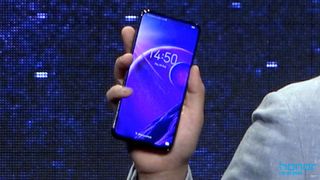The Slider Phone Is Back to Kill the Notch
Xiaomi, Oppo, Lenovo, Huawei… until engineers find a way to put a camera behind a screen, sliding screens seem the way to go.
There's a trend coming back to flagship phones: the slider. New and incoming top phones from Xiaomi, Oppo, Huawei and Lenovo are adopting this design in the race to release a phone that is truly all screen.

Unlike Apple and every Android manufacturer except Samsung — including Google with the rumored Pixel 3 XL — these brands want to eradicate notches and bezels of any kind to obtain a perfect slab of glass that actually feels like a piece from the future. And since companies still don’t have a camera technology that allows to take pictures from behind a display, there are only two options to make this happen.
One is the pop-up selfie camera. This is the solution of the Vivo Nex S, which has a mechanized camera that slides from the chassis in less than a second to take a picture of your pretty face. Despite Vivo’s claims about the camera durability, which should be able to take hundreds of thousands of selfies without breaking, people are a little bit concerned about how true this is and how fast the camera can pop up.
The other option is a sliding mechanism or sliding display, a design that has been well tested for years. Slider phones are not new at all. Back in the the 1990s and 2000s, in fact, they were all the rage —Nokia effectively used this method to make phones more compact while maintaining their usability or even increasing it, revealing full keypads and keyboards under the phones’ sliding displays.
And while the sliding mechanisms on these new flagships are not as dramatic as the Nokias, they cleanly answer the “Death to the Notch!” battlecry.
Oppo Find X

Our editor Mark Spoonauer says that the Oppo Find X is a stunning slice of the future. The 6.4-inch Find X (which sells for $850 unlocked) is “one of the most beautiful phones ever made.” The display slides to reveal a 25-megapixel selfie camera with 3D beautification technology that uses AI to make photos prettier.
Sign up to get the BEST of Tom’s Guide direct to your inbox.
Upgrade your life with a daily dose of the biggest tech news, lifestyle hacks and our curated analysis. Be the first to know about cutting-edge gadgets and the hottest deals.
The quiet sliding mechanism, which is rated for more than 300,000 retractions, also reveals the dual rear cameras. It is a gorgeous phone indeed, one that is distinctively different from the iPhone X and hundreds clone models out there.
MORE: Oppo Find X Review
Xiaomi Mi Mix 3

This allegedly leaked video shows the incoming Xiaomi Mi Mix 3, fully powered. It demonstrates how the sliding mechanism might work: it’s basically instantaneous. I would assume that, in the final version, this will trigger the camera in selfie mode, which would be the most rational and convenient action.
Xiaomi CEO Donovan Sung also posted the image above and this tweet, confirming the phone’s design. (Extra bonus: at least one version of the Xiaomi Mi Mix 3 seems to have 5G connectivity.)
Honor Magic 2

The Honor Magic 2 — the second brand of Chinese titan Huawei — was teased at IFA. The all-screen sliding phone will be powered by a Kirin 980 processor, which in theory will be faster than the current Kirin 970 in the top of the line Huawei phones.
According to Honor president George Zhao, the Magic 2 is at least two months away from coming to the market.
Lenovo Z6?
The Chinese company — famous for its ThinkPad laptops to U.S. audiences — is also going to release a slider phone of unspecified characteristics. The only thing we have is a video posted by Lenovo VP Yong Rui. It seems that the phone will have a fingerprint reader under its display, like some Xiaomi, Vivo and Honor phones.
We will have to see if Rui delivers on this promise, though, as he previously teased that the Z5 was going to be notch-free as well. It wasn’t, but now the technology seems to be in place to make it possible.
The no-notch backlash is good
Meanwhile, Apple is allegedly adopting the notch design in all its future phones, to be announced on September 12.
The funny part in all this? While these manufacturers are differentiating themselves from Apple and the myriad of notch clones out there, they are also advancing the industry to a point in which you will not be able to distinguish the front of one phone from another. But if we are going to live in a fully commoditized smartphone world, I would rather not have a notch ruining the view.
Jesus Diaz founded the new Sploid for Gawker Media after seven years working at Gizmodo, where he helmed the lost-in-a-bar iPhone 4 story and wrote old angry man rants, among other things. He's a creative director, screenwriter, and producer at The Magic Sauce, and currently writes for Fast Company and Tom's Guide.

